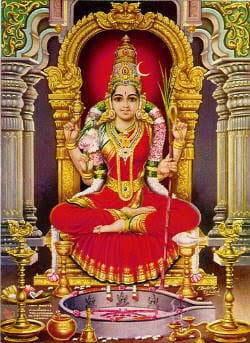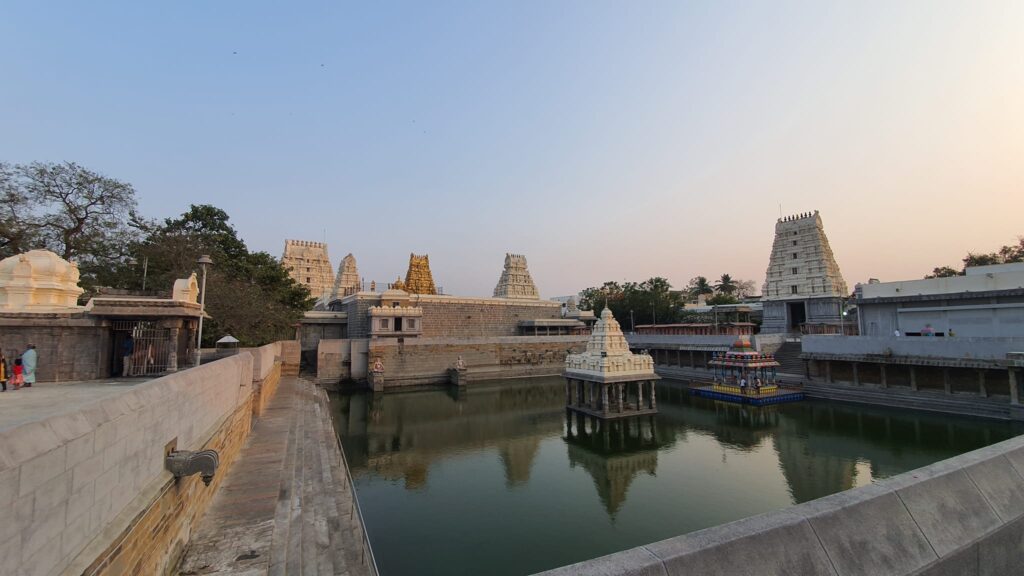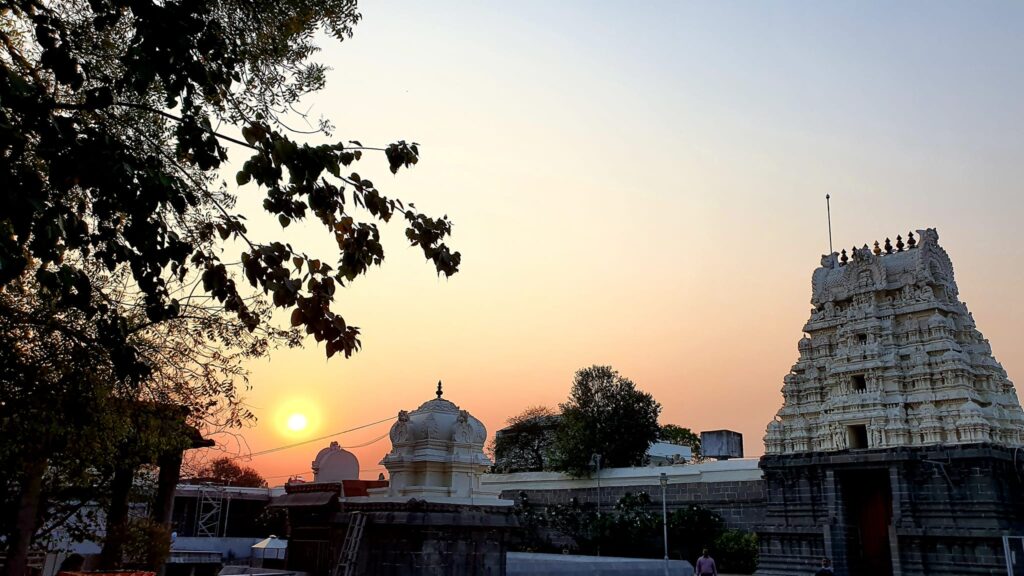(A Short History of The Sivaganga Mutt By B.Suryanarain Row, Thampy&Co., Bangalore, 1914)
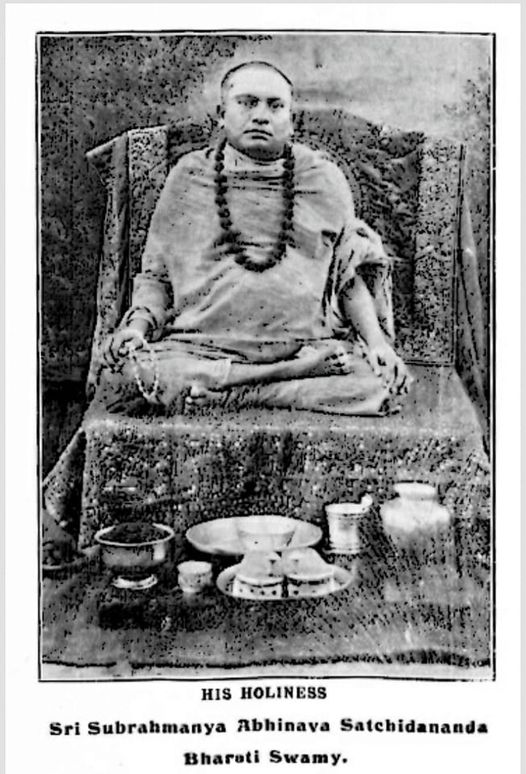
(A Short History of The Sivaganga Mutt By B.Suryanarain Row, Thampy&Co., Bangalore, 1914)

According to Gururatnamalika of Sadasiva Brahmendra (verse no.75) and the Sushama commentary on the same by Atmabodha, Vidyaranya, the disciple of Vidyatirtha, Peethadhipathi of the Kanchi Kamakoti Peeta – went to Mysore which was then in a state of confusion, established 8 branch mathas there, Virupaksha and Pushpagiri being two among them.
As regards these two mathas, Kokkandram Venkataratnam Pantulu, an adherent of Sringeri Matha in his Sankara Matha -Tatva- Prakasikartha-Sangraha quotes from the Mathamnaya recited in Pushpagiri Matha according to which Sri Vidyaranya went from Kanchi and installed Chandrasekhara Bharati at Sringeri. He also established a new Matha at Virupaksha where he installed Narasimha Bharati as the Head.
Another version about the origin of this Sankarite institution is as given below:
One of the successors of Narasimha Bharati in the Virupaksha Matha went on tour and on his way he reached Pushpagiri. He found that it was a convenient place for tapas and meditation and accordingly founded a matha there and himself stayed in that (Pushpagiri) Matha and sent one of his disciples to preside over the Virupaksha Matha.
In the Topographical list of inscriptions of the Madras Presidency, many records with names of Narasimha Bharati and Vidyasankara Bharati, the Gurus of Pushpagiri matha, are found. All these Grant’s were made to the Pushpagiri matha, only as an * independent religious institution* .
None of these records mention this matha as a shakha or branch matha of any other Sankarite institution.
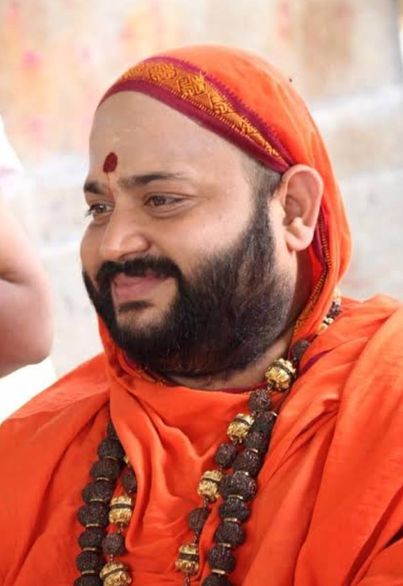
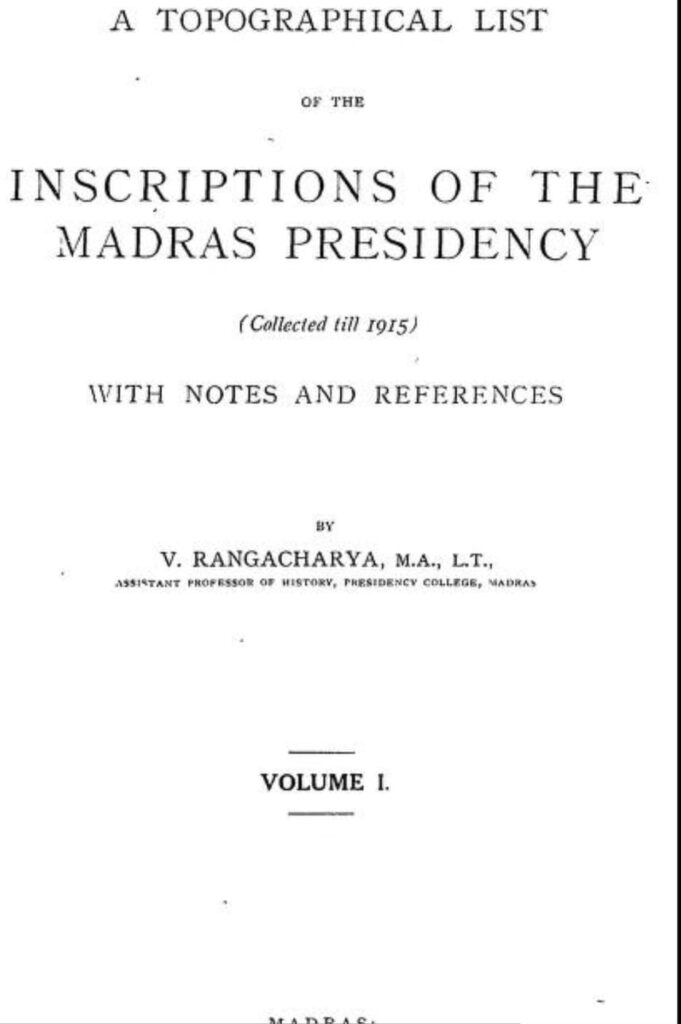
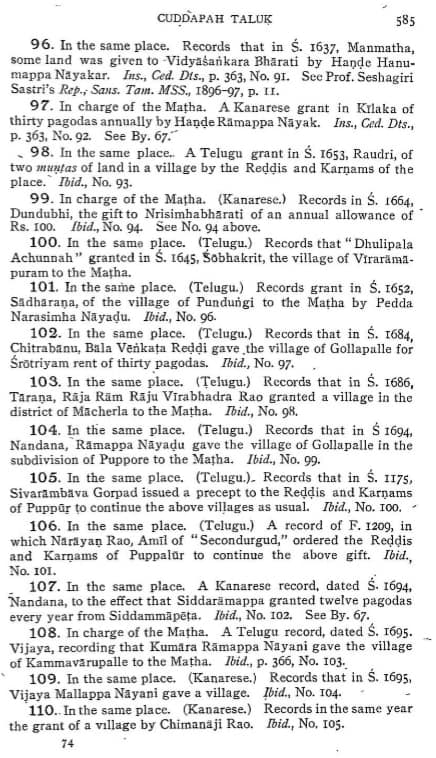
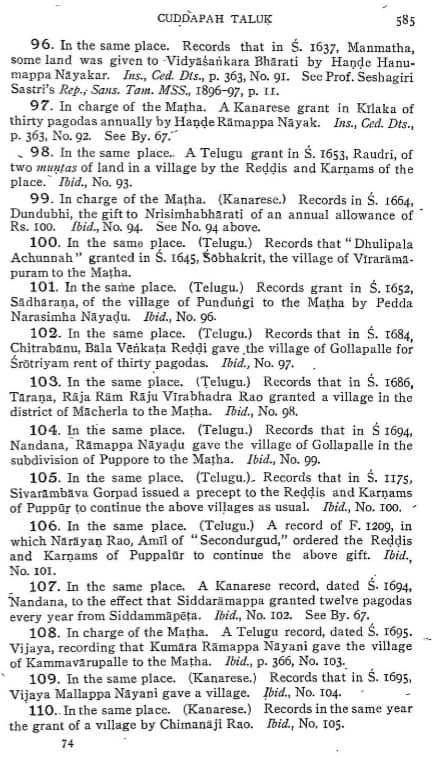
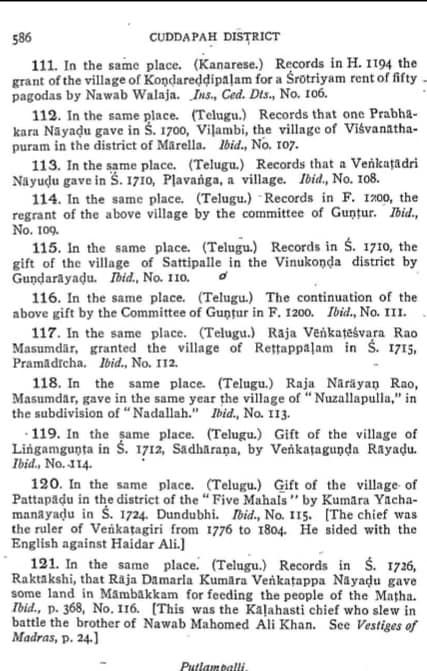
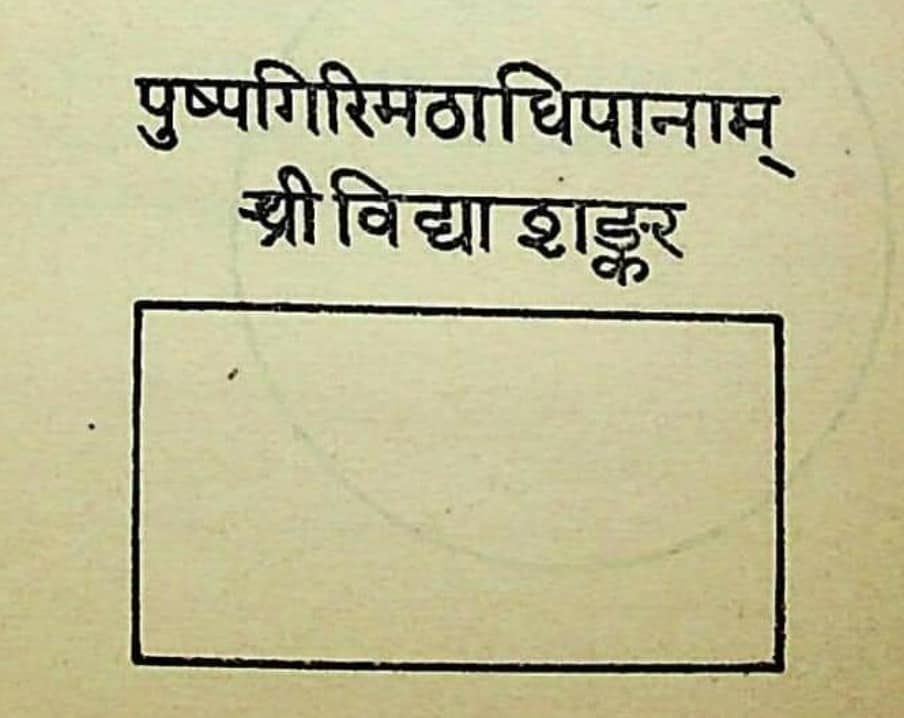
In the cultural heritage of India two streams viz, Pravirtti and Nivritti based on the Vedas are flowing. For these two streams the original canal is Lord Siva in the form of Uma and Mahesvara. This form indicates the path or Pravirtti. For the path of Nivritti the form of Dakshinamurthy is the original source. In Northern India, when many temples were razed to the ground, during the Mughal period, the tradition of Dakshinamurthy came to fade.
From Bengal to Baluchi and Kashmir to Kerala, the upasana of Dakshinamurthy is observed to this day. Yet the scarcity of temples for external worship of Dakshinamurthy are very few.
His Holiness Satchidanandagiri has constructed a temple of Dakshinamurthy near the old temple of Siddhantha Mani where he himself meditated upon Dakshinamurthy. Probably this is the Advaita Mutt referred to as Dakshinamurthy Mutt, at Kasi.
The Guruparampara of Dakshinamurthy Mutt also called Dhruvesvara Mutt, Varanasi is as follows:
1. Managiri
2. Meghagiri
3. Ramagiri
4. Satchidanandagiri
5. Amarendragiri
6. Manishagiri
7. Ramananda Giri
8. Nrisimha Giri
9. Niranjana Giri
10. Krishnananda Giri
(Prepared from ‘Gandivam’-Chaitra Sukla Prathama, 24-3-1974 By Sri Anantananendra Saraswati)
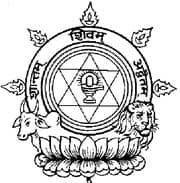
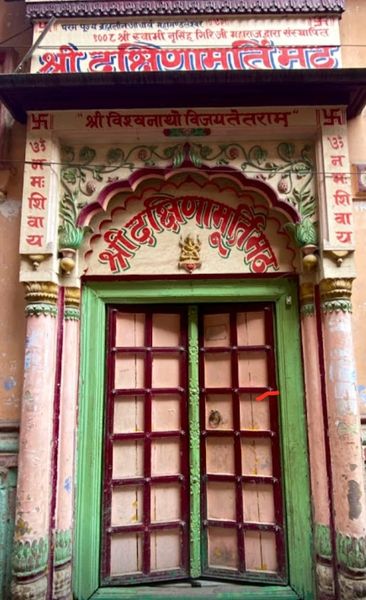
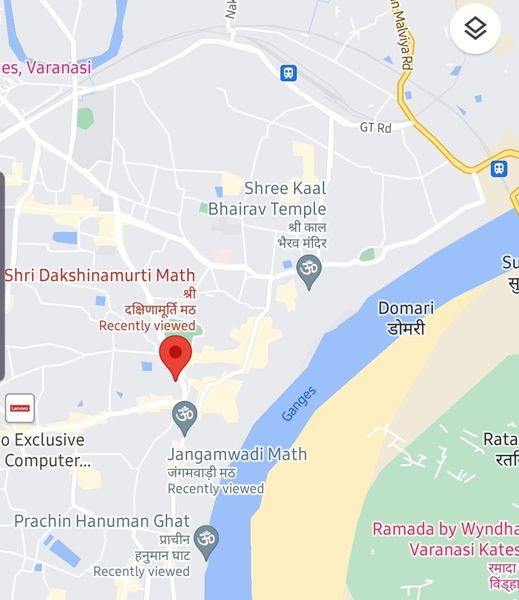
This work has 2016 slokas in Nagara character which contain Tantric rituals for the worship of various forms of S’akti.
Gadyavallari was written by Nijátmá – prakás’ánandanátha Mallikárjuna Yogíndra in the18th century. A paper manuscript of this work was ccollected from Bihar State.
A brief reference about this Tantrik work is also found in the Notices of Sanskrit Manuscripts by R. L. Mitra, No. 2261, published by the orders of the Government of Bengal, Vol.VIzi, Calcutta, 1884.
This work opens with a list of the Gurus belonging to the S’añkarácharya Parampara. After naming some of the earliest Preceptors of Advaita such as S’iva, Vishņu, Vas’ishtha, Parásara, &c., the line of succession from S’añkaracharya runs thus:
1, Sankara;
2, Bodhaghana Achárya;
3, Jnánaghana;
4, Jnánottamas’iva;
5, Jnánagiri;
6, Simhagiri;
7, I’s’vara Tírtha;
8, Nrisimha Tirtha;
9, Vidyátirthas’íva;
10, Bharati Tirtha;
11, Vidyáranyaguru;
12, Malayánandadeva Tirtha Saraswatí;
13, Yádavendra Saraswatí;
14, …… sarasvati;
15, Srínrisimha Saraswatí;
16, Mádhavendra Saraswatí;
17, Mallikarjuna Yogindra;
18, Rámadeva;
19, Dáyadeva Yati;
20, Gananánanda;
21, Chidghanánanda;
22, A’nanda-chitpratibimba.
The succession list of Gurus of the Sringeri Matha given in the Guruvamsa Kávya of the Sringeri matha substantially agrees with that given in Gadyavallari written in 1435 Saka.. 1736 C.E. (upto Vidyaranya). It is to be noted that the names of Gurus starting from Malayananda Deva (Sringin or Malayala Brahmendra?) are not found in the recently published list of Gurus of the Matha.
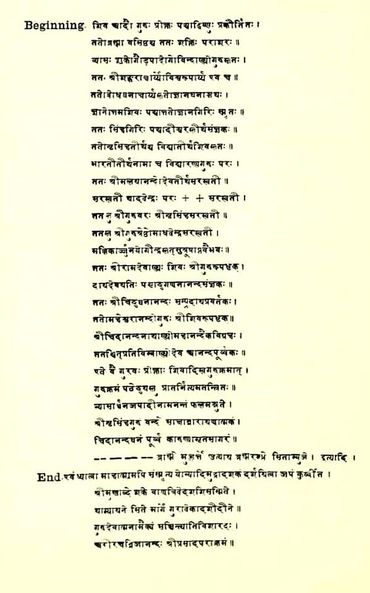
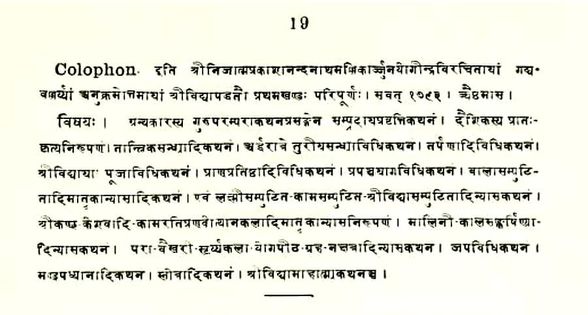
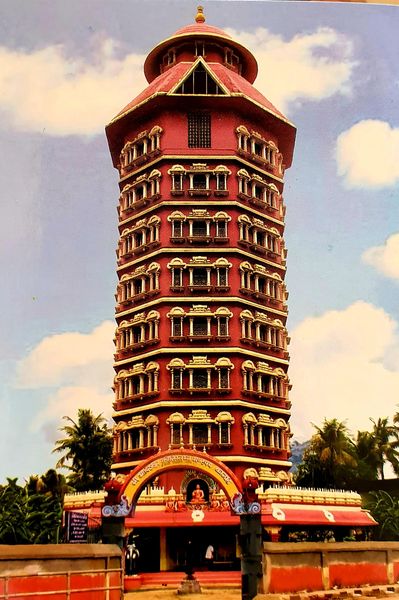
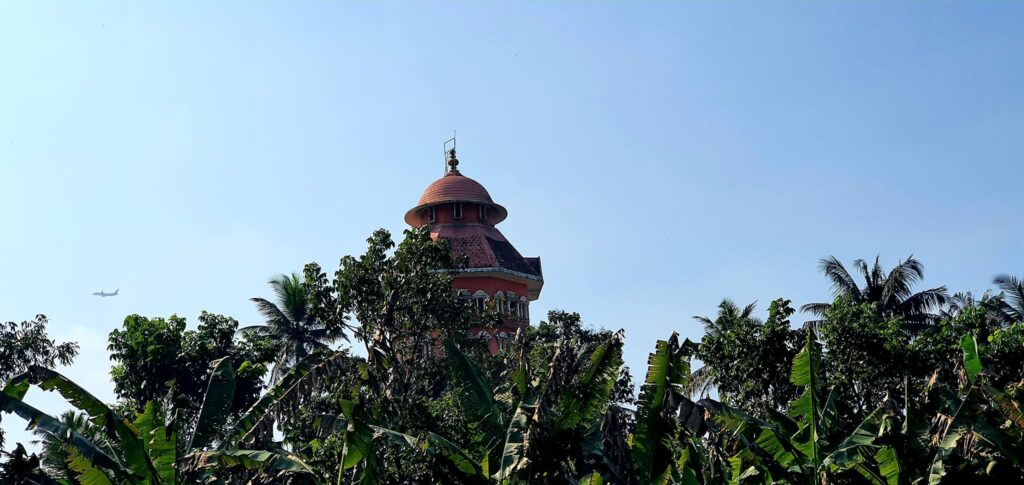
SRI KANCHI KAMAKOTI PEETAM SRI SANKARA BHAGAVATPADA KEERTI STHAMBHAM, KALADY, KERALA
The tallest religious monument of Kerala, the Sri Adi Sankara Bhagavadpada Keerti Sthambham , rising to a dizzy height of 152 feet to perpetuate the memory of the Saint, who was born at Kaladi to rise to the pinnacle of glory and to place the resuscitated Hinduism on its solid pedestal, overlooks the sacred spots of the village, associated with Sri Adi Sankaracharya’s life.
From the top of the nine-storey structure an imposing eight-foot statue of the Saint with his four disciples looks down on the sprawling carpet of green beneath, the shadowy valleys of Ghats merging with the margins of the distant horizon and the proud Periyar river still washing the feet of the village with the brimming irrigation canals, criss-crossing the countryside to bring life to the parched land.
The exquisitely built reinforced concrete structure represents a harmonious blending of the concepts of modern architecture with the prescription of the scriptures and traditions and the stipulations of Silpasastra.
The temple architecture traditions of Kerala and Tamil Nadu have also been blended judiciously. The seasoned masons of Kerala and a good number of young workers, men and women, worked with fervour for about two years to give concrete shape to the tower, while the deft hands of the artists from Tamil Nadu drew poems on Sri Sankarachaya’s life in cement for the ornamental work.
Though originally conceived to be 85 feet tall, which incidentally coincided with the 85th year of the Jagadguru of Kanchi Kamakoti Mutt, His Holiness Sri Chandrasekharendra Saraswathi Sankaracharya Swamigal, the architectural and engineering require ments and the aesthetic compulsions finally raised it to over 150 feet, more than double the 60 feet diameter of the basement.
Among the latest in the series of Sri Sankaracharya monuments built under the auspices of the Kanchi Mutt in different parts of India and Nepal, the Kaladi tower costing Rs. 20 lakhs, is one of the tallest so far. The other memorials are at Kanchipuram, Kurukshetra, Haridwar, Puri, Madhyarjunam, Jambukeswaram, Rameswaram, Kanyakumari, Srisailam, Tirupati, Tryambaka, Lakshmanjhula, Badari, Kedara, Khatmandu, Prayaga and Kashi.
Though it can still be called a religious monument, the concept and the execution of the Kaladi tower are essentially secular. Basically, it is only a memorial dedicated to the greatest son Kerala has ever produced. There is nothing of a temple or place of worship in the stupa.
The life story of Sri Sankaracharya and the huge figures of Gods and Goddesses installed on the different floors may still make it look like a temple. But the difference is brought home by the fact that the figures and relief work were all done in cement as distinct from granite, the usual medium for the temples.
It is just another instance of the harmony -a secularist memorial to a religious genius, to whom the country owes a good deal. Its utility too can be very secularist in nature, for it can be developed into a centre of Vedic learning, a place of tourist attraction, a deserving monument to an epoch in history, when the genius of India found expression. A small shrine built beside the stupa could grow into a focus of religious worship.
The marvel of the Saint’s life starts strik ing the visitor as soon as he steps on to the basement of the tower where the ‘Padma paduka’ in marble is installed. Then as you ascend the winding stairs the story of the genius and his ascension to the pinnacle unfolds itself before you in the form of 49 panels of mural relief.
The flight of steps lead you to a lofty world, far above and away from the base to the Sankarapattabhisheka and finally to the imposing figures of the Saint and his disciples, overlooking the world beneath, with Dakshinamurthi in the background as mural relief.
As you go past the floors, the huge figures of the ‘Gitopadesa’, Vinayaka, Muruga, Surya, Mahavishnu, Kamakshi and the colossal Sivalinga, make your climb a pilgrimage, a spiritual and an aesthetic experience. And you never realize that you have climbed 150 feet.
Jagadguru Sri Jayendra Saraswathi Sankaracharya Swamigal of Sri Kanchi Kamakoti Peetam arrived at Kaladi on May 6, 1978, and stayed there till May 18, in connection with the Samprokshanam of the Stupa, which took place on May 12 (Sri Sankara Jayanthi Day).
Sri Sankaracharya stayed at the Manikkamangalam Devi Temple, where the father of Sri Adi Sankara was the chief priest, and performed Sri Sankara Jayanthi Celebrations.
– P. Aravindakshan (1979)
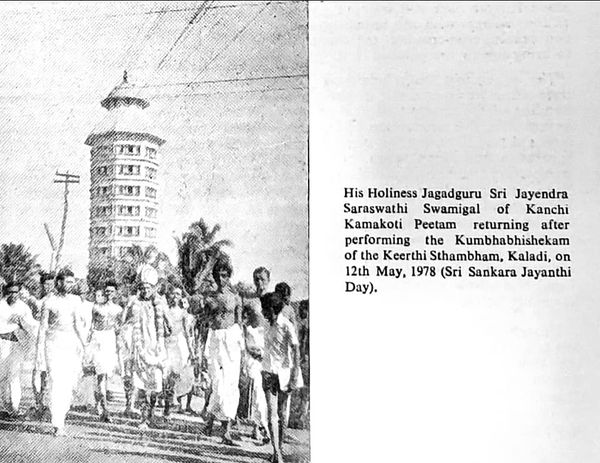
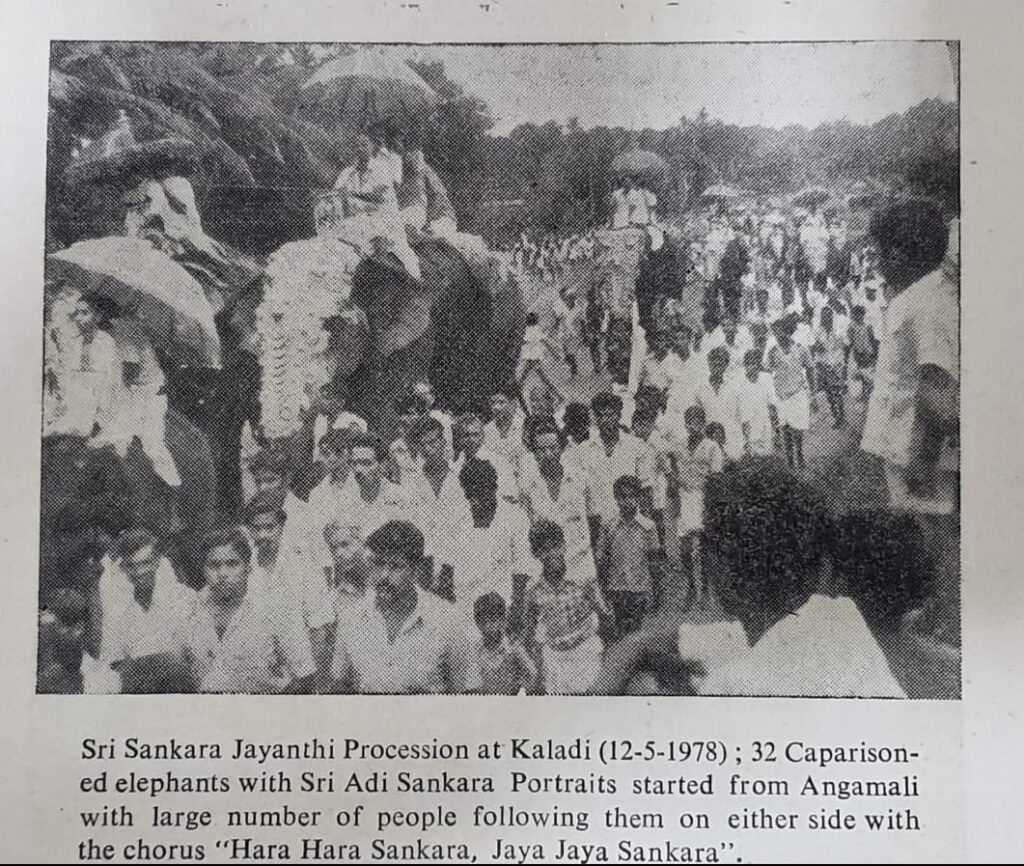
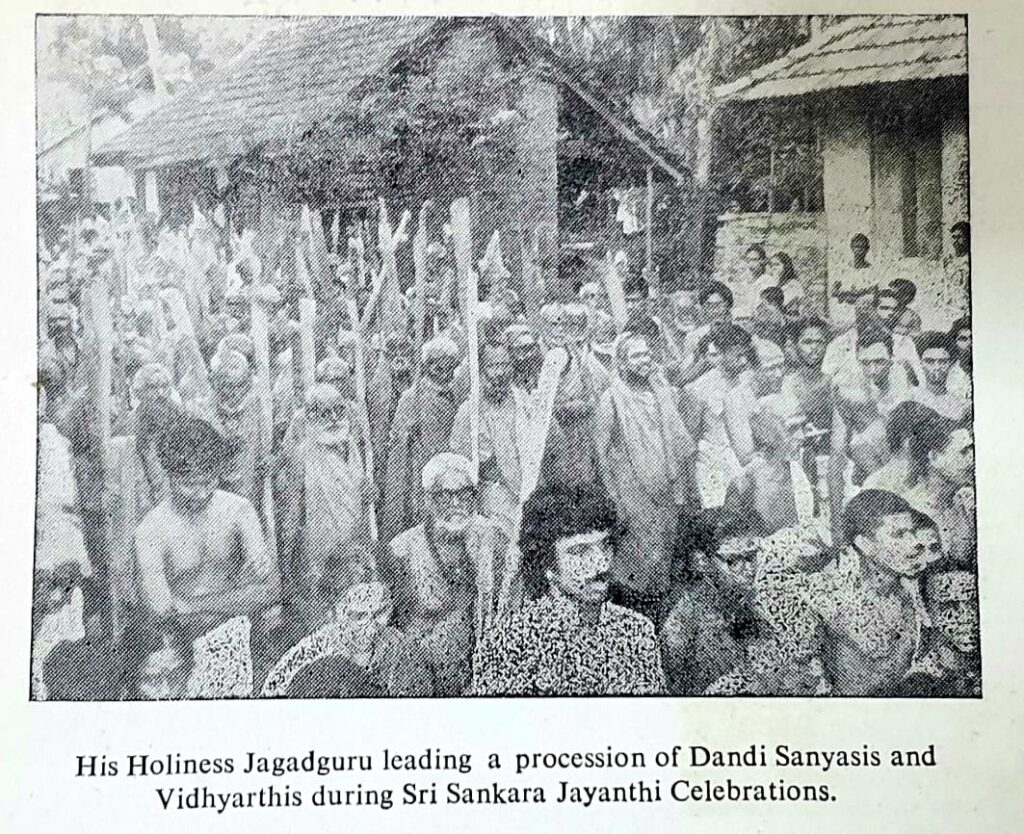
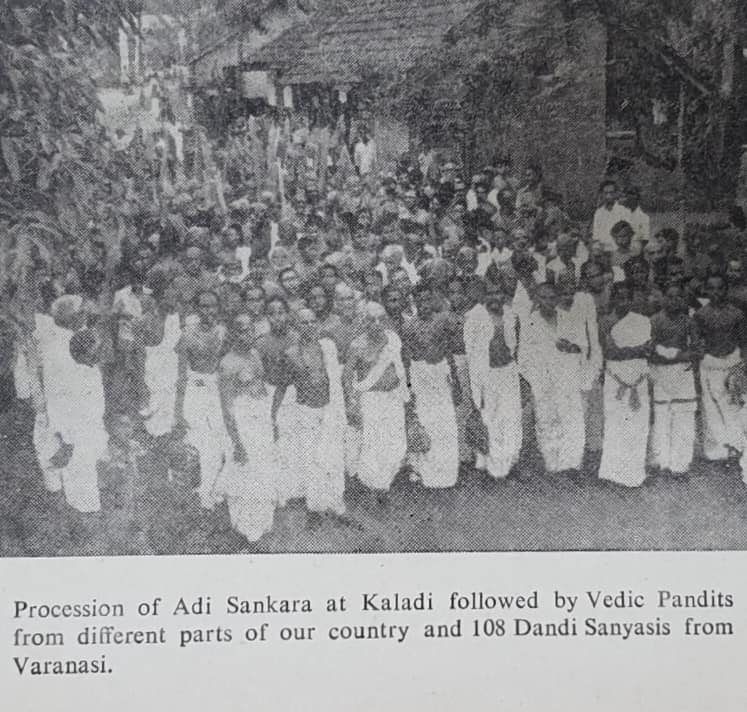
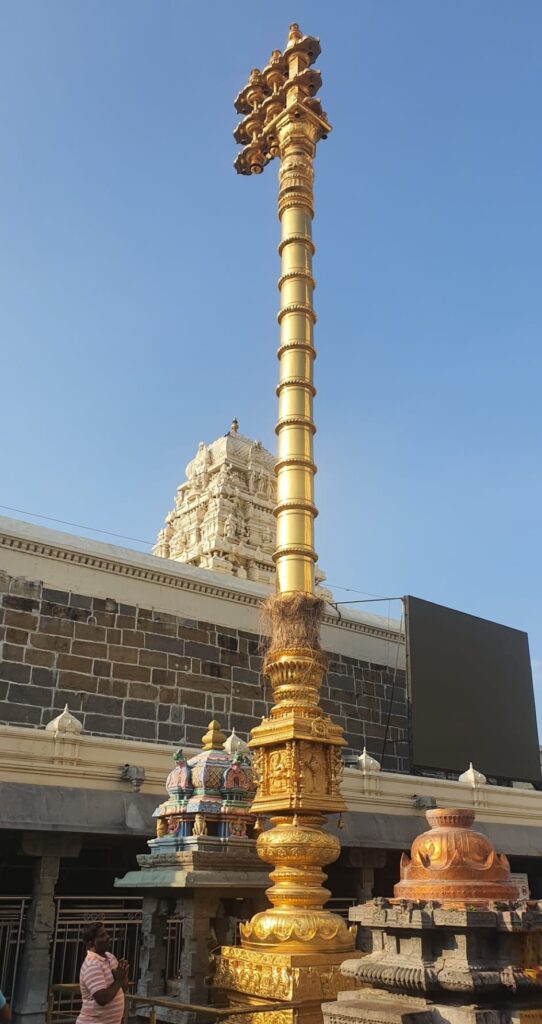
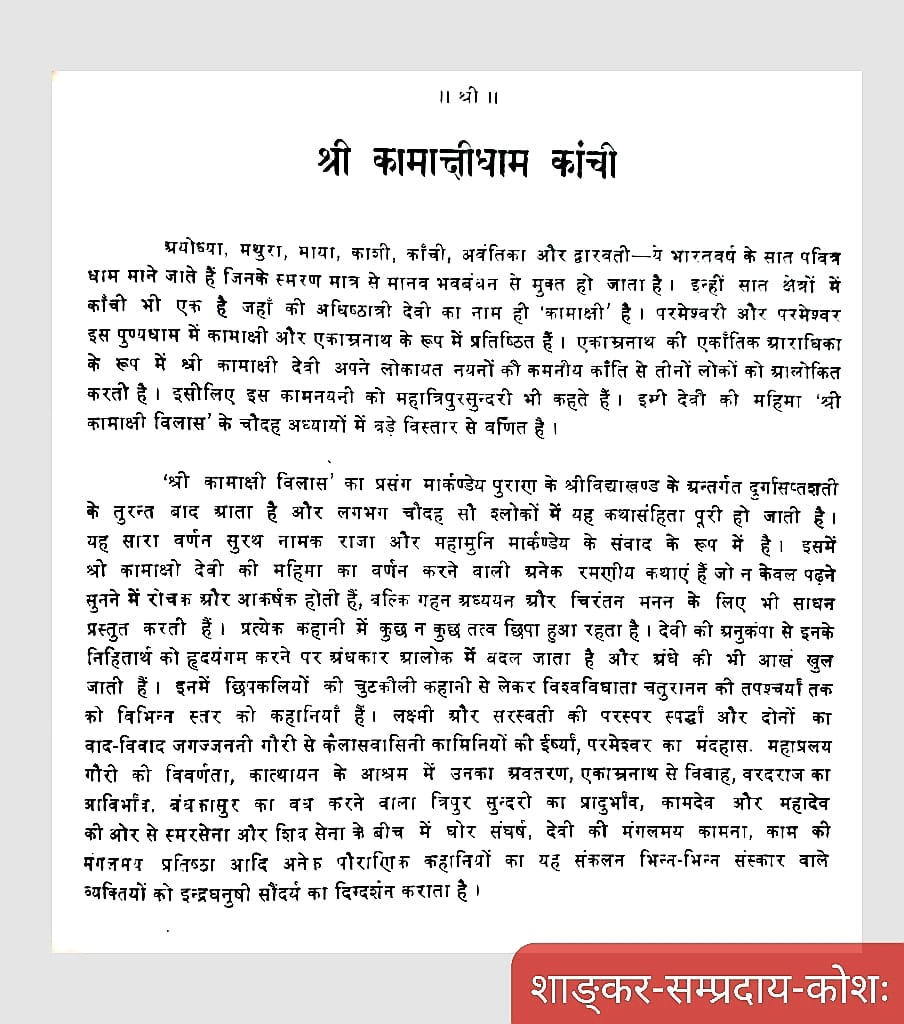
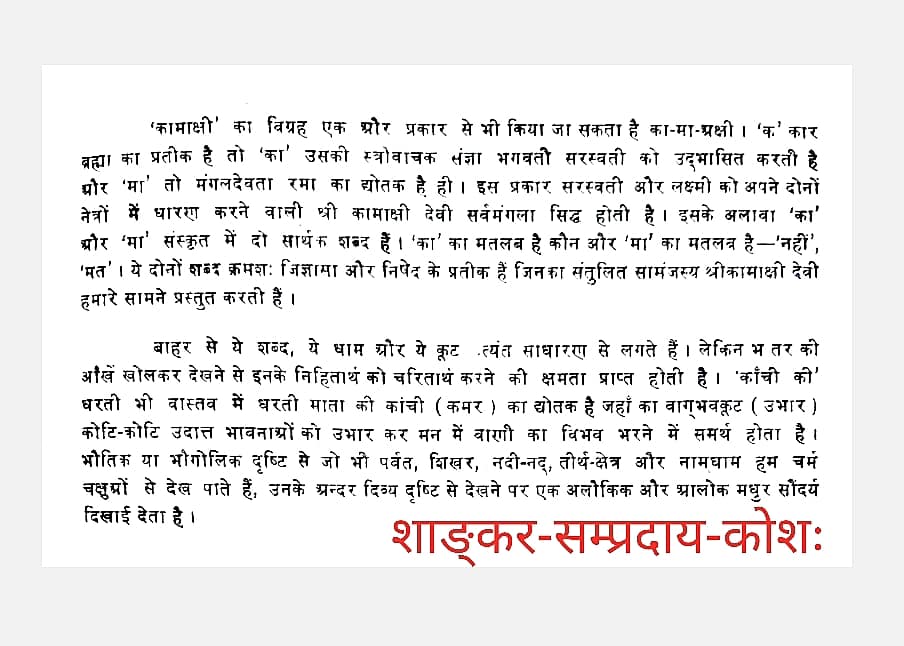
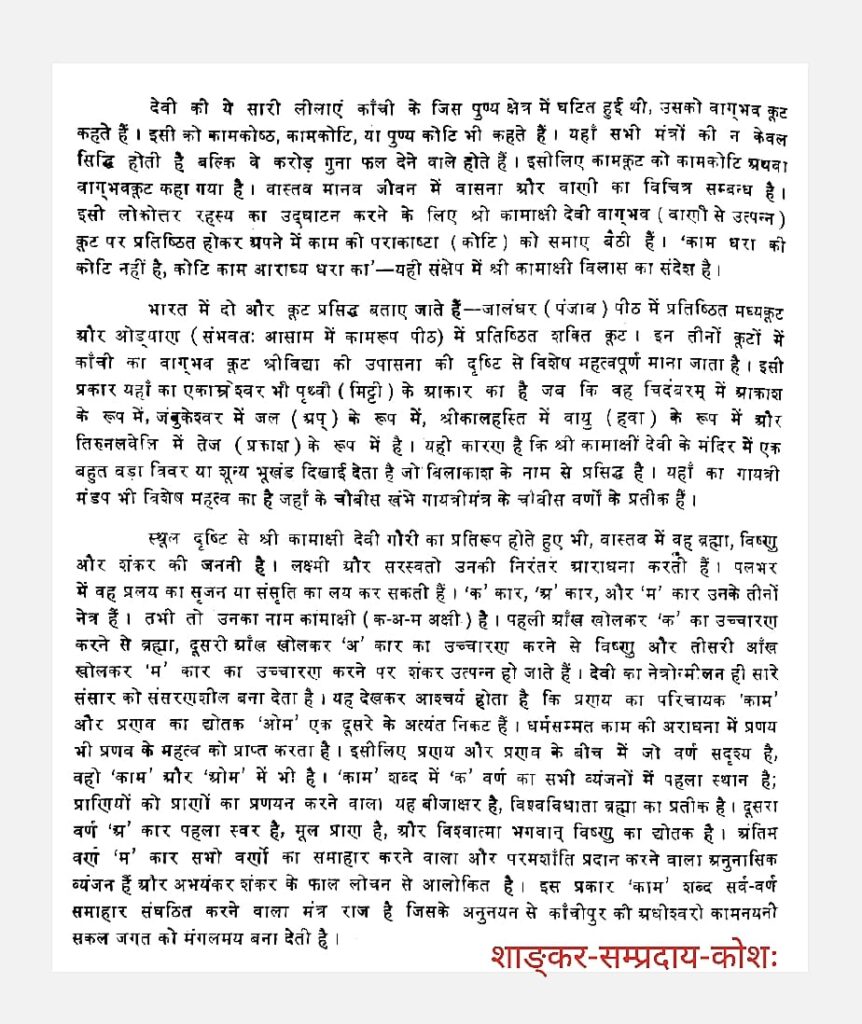
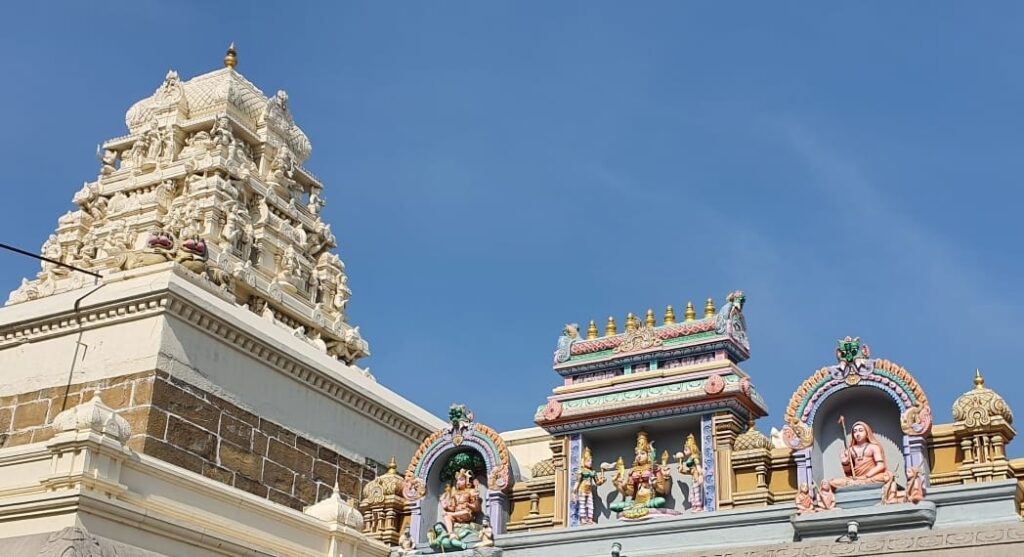
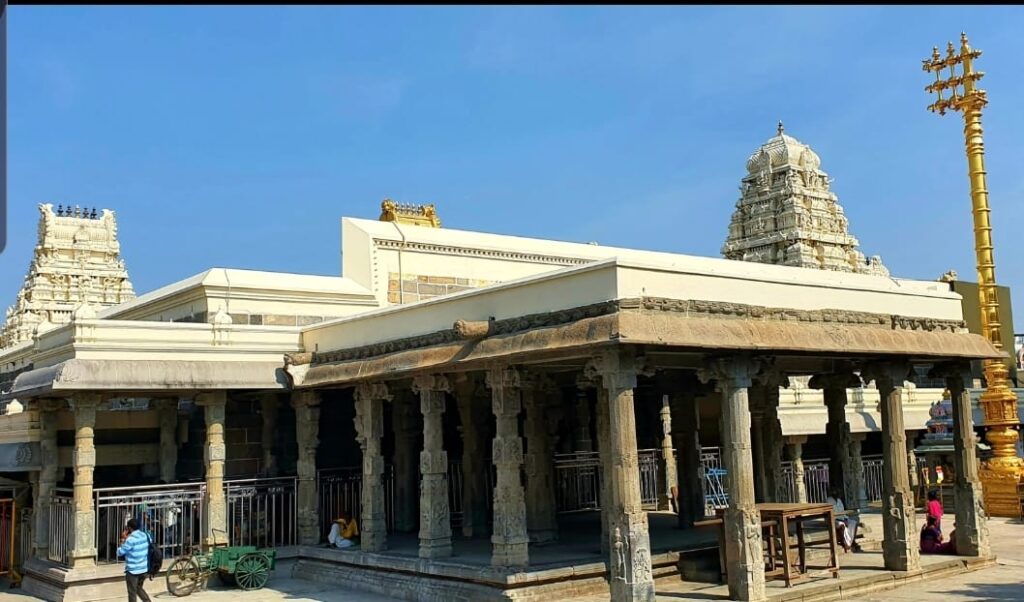
Kanchipuri is sacred to all Hindus, Vaishnavite, Saivite and Saktha alike. There are a number of temples dedica ted to Siva, Vishnu, Ganapati etc. in Kanchi, big and small, of architectural celebrity and otherwise. But most of them are ancient.
The shrines of Sri Varadaraja (Hastisailanatha ), of Sri Ekamranatha and Sri Kamakshi are the most celebrated of these temples. The Kamakshi temple seems to be one of the most ancient temples of our land since we find a reference to it in one of the old Tamil verses cited by Adiyarkunallar the famous commentator of Silappadikaram (one of the five great Tamil classics), while dealing with Karikala’s expedition upto the Himalayas.
One important thing that strikes the shrewd observing pilgrim visiting to Kanchi, is that the towers (gopuras) of the import ant temples of this city far and near, face the Kamakshi temple.
The processions, of the yatrotsavamurtis (icon taken out during festivals) of all the temples are taken out only along the four principal streets (Rajaveethies) of the Kamakshi Temple. Above all these; it is of significance to find no sanctum sanctorum (Garbhagriha) for the Devi in any of the Siva shrines within the limits of Kanchi city; be the temple small or big.
But just outside the boundaries of this holy city one finds Mula Vigrahas of stone of the Devi in all Siva temples far and near Kanchi.
The reason for this is to be found in the Kamakshi Vilasa Purana wherein it is stated that in blessing Manmatha (Cupid) on having been satisfied with his penance, Sri Kamakshi drew unto her Bilakasa Svarupa (air form in a cave) all the Sakti (Powers of the Devi) scattered in all the Devi shrines of the land.
But later, on the prayer of Brahma, the creator, She vouchsafed that all Siva Temples of the land save those in Kanchipuri, styled as ‘Shivajitkshetra’ shall have Devi Shrines.
The portion of Kanchi city in which the shrine of Sri Kamakshi is situated is called Kamakoshtam in Sanskrit and as ‘Kamakottam’ in Tamil. It is evident that only from this terminology, the author of the Bhagavata has referred to Kanchipuri as Kamakotipuri (or Kamakoshti).
A study on inscriptions on the walls of many a South Indian temple reveals that all Devi shrines, inside Siva Temples in South India, were called only as Kamakottams, after the Kamakoshtam of Kanchi.
Three of the 63 Nayanmars (Tamil saints), Appar, Sambandar and Sundarar have referred to the Kamakoti of Kanchi and of them Sambandar has referred to even ‘Kacchi Kamakoti’.
From these it is evident that only the Sakti in Kamakoshtam has per meated throughout the land and that Sri Kamakshi is the nucleus of Sakti.
Inside the Kamakshi shrine at Kanchi, there are the icons of Adivaraha commonly called ‘Kalvar’ identified as one among the 108 Vaishnavite holy places.
By the side of Kamakshi in Raja Rajeswari pose, we find the Tapas Kamakshi and in front, the Srichakra consecrated shalagrama shalagrama shila by Adi Sankaracharya.
The Bilakasa is spread under Devi Kamakshi. The whole city is permeated with the air of the Bilakasa according to the Kanchi Mahatmya. Every year on the Aipasi Pooram day, special poojas are conducted for Devi and Bilakasa.
